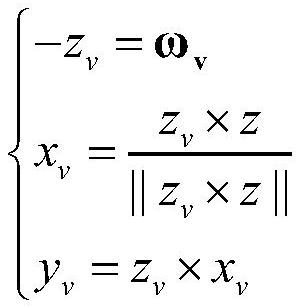Wetland aquatic vegetation canopy reflection modeling method based on photon mapping
An aquatic vegetation and photon mapping technology, which is applied in the field of optical remote sensing, can solve the problems of increasing the complexity of remote sensing modeling of aquatic vegetation, and cannot be regarded as ideal scattering or refraction, and achieves the effect of clear physical concept, convenient calculation, and reliable accuracy assurance.
- Summary
- Abstract
- Description
- Claims
- Application Information
AI Technical Summary
Problems solved by technology
Method used
Image
Examples
Embodiment Construction
[0049] In order to better illustrate a photon mapping-based wetland aquatic vegetation canopy reflection modeling method involved in the present invention, the model of the present invention was used to test and analyze, and good results were obtained. The specific implementation method is as follows:
[0050] (1) The vegetation in the aquatic vegetation scene is considered to be obtained by arranging the three-dimensional model of a single plant according to the law expected by the user. First, according to the growth period expected by the user, the shape characteristics and geometric parameters of the form are obtained, and the three-dimensional structure of the vegetation is described by the classification sentence. The three-dimensional model of the corresponding plant is generated by L-system, and finally the three-dimensional model is used. The copied instances are moved to different positions in the scene to construct a simulated 3D vegetation scene;
[0051] (2) Calcu...
PUM
 Login to View More
Login to View More Abstract
Description
Claims
Application Information
 Login to View More
Login to View More - R&D
- Intellectual Property
- Life Sciences
- Materials
- Tech Scout
- Unparalleled Data Quality
- Higher Quality Content
- 60% Fewer Hallucinations
Browse by: Latest US Patents, China's latest patents, Technical Efficacy Thesaurus, Application Domain, Technology Topic, Popular Technical Reports.
© 2025 PatSnap. All rights reserved.Legal|Privacy policy|Modern Slavery Act Transparency Statement|Sitemap|About US| Contact US: help@patsnap.com



